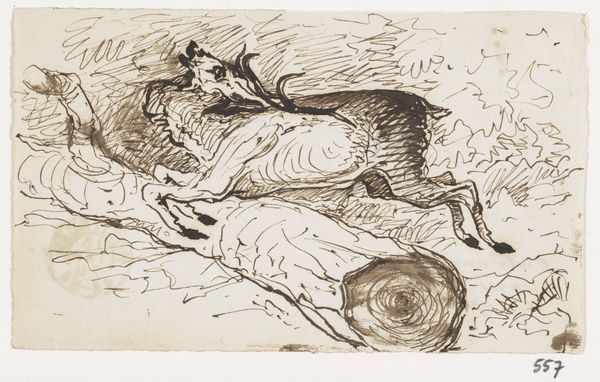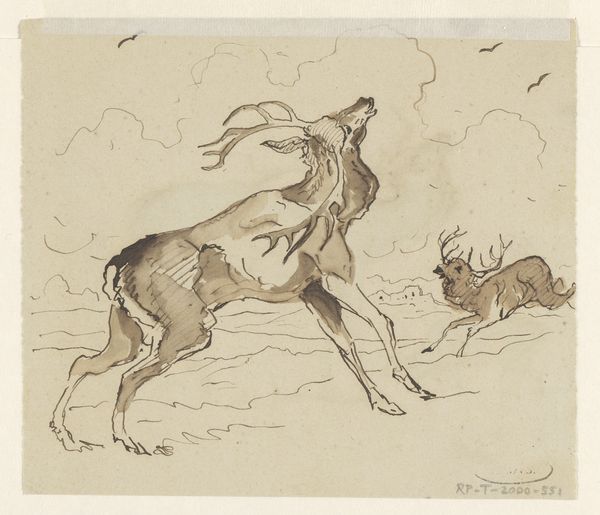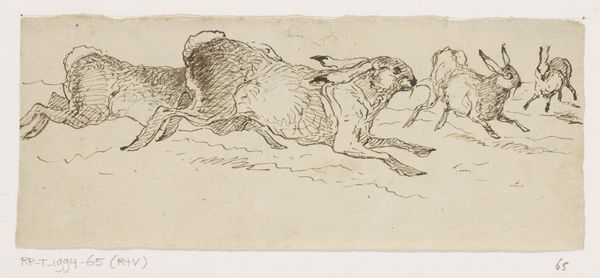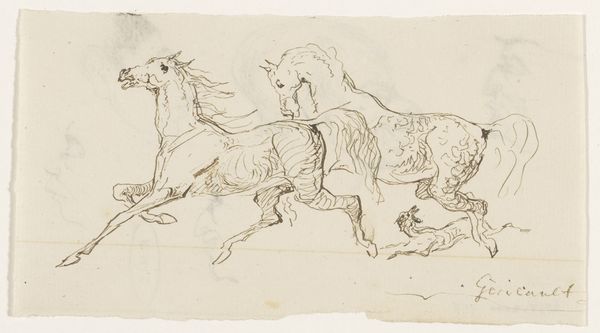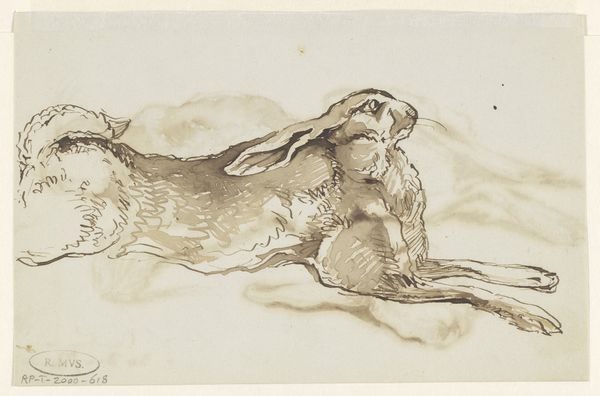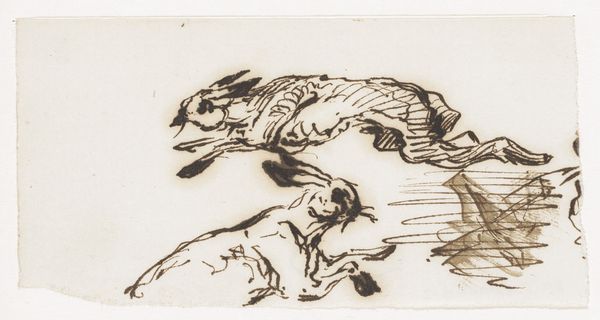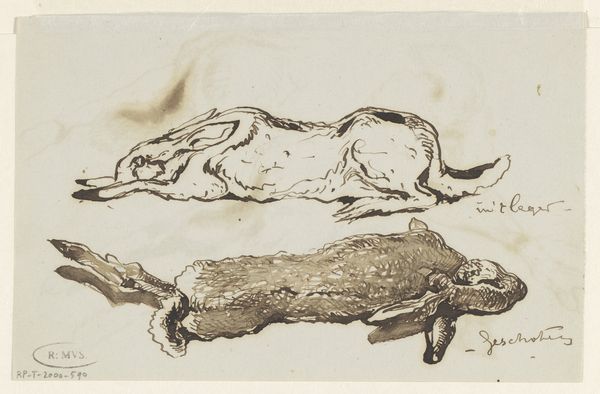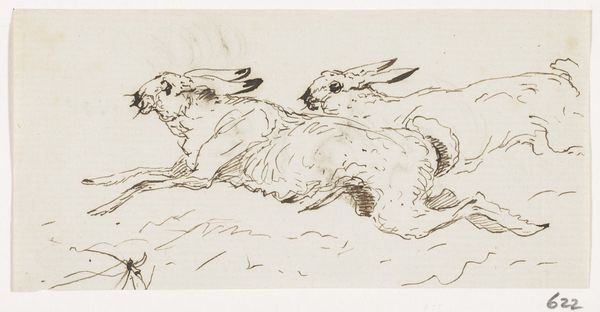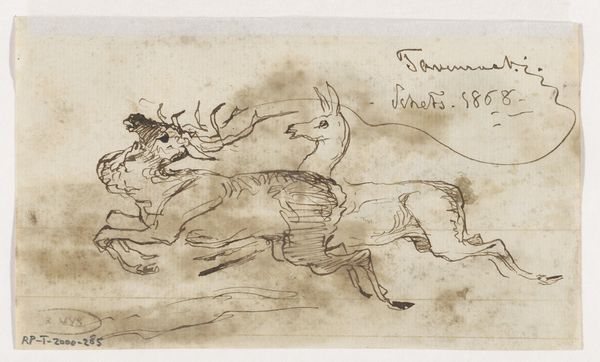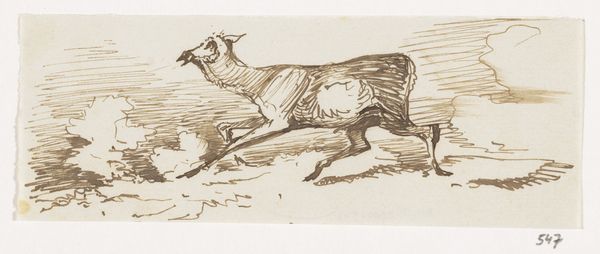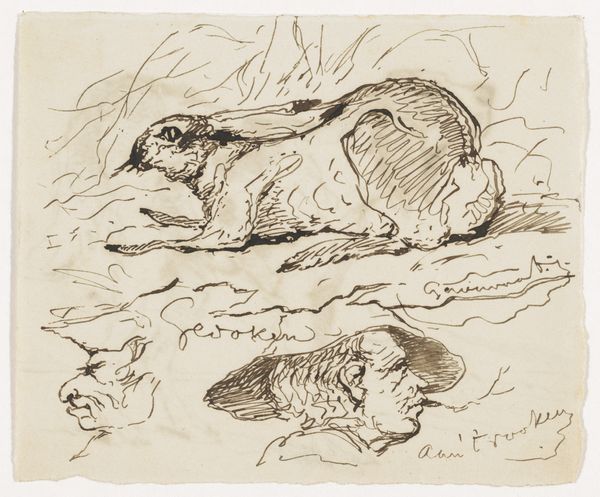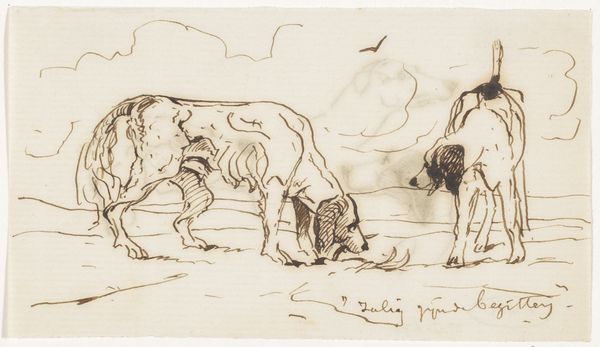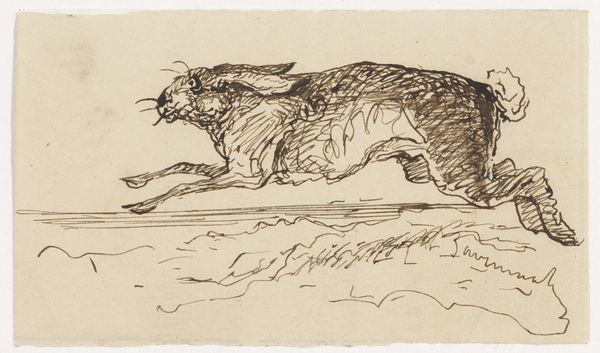
#
imaginative character sketch
#
toned paper
#
light pencil work
#
ink drawing
#
pencil sketch
#
personal sketchbook
#
ink drawing experimentation
#
sketchbook drawing
#
watercolour illustration
#
sketchbook art
Dimensions: height 105 mm, width 165 mm
Copyright: Rijks Museum: Open Domain
Curator: This delicate piece, titled "Sketch on a Hunt," comes to us from Johannes Tavenraat. Likely created between 1880 and 1882, it resides here at the Rijksmuseum. It is executed with pencil and ink on toned paper. Editor: It feels very immediate, capturing a moment of intense activity and perhaps fear. There’s a frantic quality to the lines. The rabbits seem almost weightless. Curator: It's precisely that immediacy which captures my attention. It prompts reflections on 19th-century hunting practices, deeply entangled with class, privilege, and the domination of humans over the natural world. How were such scenes consumed and interpreted by various segments of society? What meanings did they ascribe to these depictions of the hunt? Editor: Yes, and it’s important to recognize the broader context: the historical and societal factors that legitimized hunting as a sport for the upper classes. The rabbits here symbolize vulnerability, and reflect the disempowerment experienced by marginalized communities. Curator: Absolutely, it also reminds us to investigate who benefits from such spectacles. It is vital that museums reflect on their role in perpetuating particular views of class, and in the representation of non-human life. These hunting scenes weren't just innocent pastimes; they were manifestations of power dynamics woven into the fabric of society. Editor: Tavenraat uses light and shadow to really heighten the emotional intensity of the scene. The use of toned paper allows the whites to pop, increasing that sense of desperation, and drawing the viewer into the frenzied movement of the animals. The sketch is sparse, suggesting the ephemeral nature of the hunt itself, as the power shifts during it. Curator: Precisely, through our discussion, we have unearthed some complex questions concerning representation, power, and exploitation, which helps to reassess not only our past, but also our present. Editor: Indeed, art often acts as a mirror, revealing our relationship with power and the broader ethical dimensions that affect us all.
Comments
No comments
Be the first to comment and join the conversation on the ultimate creative platform.
